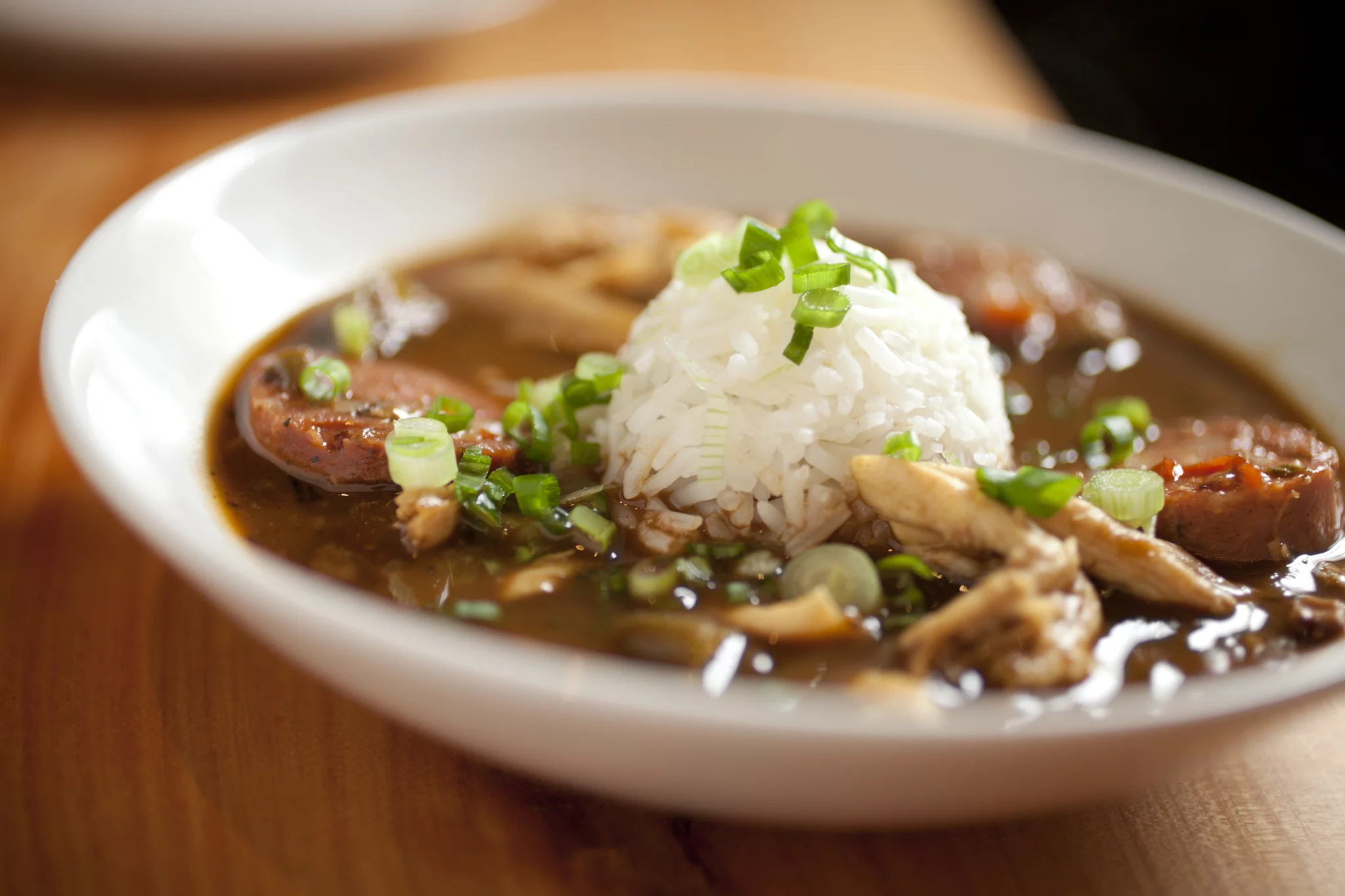Search Results
2 items found for ""
- It ain’t Gumbo without the Roux
As a child, I learned this recipe from my mother and it's the same recipe I tell my kids how to make when they call. I put a lot of love into the big pot every Friday when I make it for the restaurant. Therefore, it will always have a special place in my heart. Louisiana cuisine is renowned for its gumbo, and the dish is probably the most popular among Louisianans. There is no class barrier to gumbo, as it appears on the tables of both the rich and the poor. As emblematic of Louisiana as chili is of Texas, a steaming bowl of fragrant gumbo is one of life's cherished pleasures, no matter the ingredients. A bowl of gumbo can tell you a lot about Southern food history. There is a compelling reason why gumbo is now closely associated with Louisiana and Cajun cuisine. By 1721, more than half of the residents of New Orleans were black because of the massive influx of enslaved Africans into the French colony. One of the oldest dishes in Louisiana and a source of culinary pride as far back as there are written records. As much as jazz or the bayou, it has become a cultural symbol of Louisiana. It has been almost 300 years since this region first produced Gumbo, a soup-and-rice dish that is quintessentially Creole. In colonial Louisiana, many slaves came from West Africa, which is where kingombo, the word for okra, was derived. Slaves in those days consumed okra stews with rice as a staple food. Slaves often thickened their broth with okra (though not always). This leads many culinary historians to conclude that the dish itself also has an African influence. It's no secret that gumbo isn't a one-trick pony. There are endless ways to make it. Ultimately, it boils down to what you have on hand. Most gumbos are, in fact, double-thickened—first with a dark, oil-based roux and then using either okra or file powder, but never both. Seafood Gumbo: Contains some combination of oysters, shrimp, crawfish, and/or crab, and is more often made with okra than file. Poultry and Sausage Gumbo: Which uses either chicken or turkey in combination with pieces of andouille or other smoked sausages, and is more often made with file than okra. Lee Esther's Way: A mixture of both While many people will claim that their preferred gumbo is their version, gumbo is—and will always be—an ever-evolving group project that I'm honored to be a part of. Every day, new ways to enjoy the dish are created, as young cooks add their own special touches, fresh ingredients emerge, and creative ways to enjoy it. However, Lee Esther's (my mom's) way will always remain my favorite. What’s your favorite way to cook gumbo? Let us know in the comments
- "Here comes another poor boy!"
No one will argue that some of the most delicious foods come out of Louisiana. It is at the core of our identity and most of us came out of the womb eating gumbo. The people of Louisiana have blessed us with so many delicious dishes full of depth and amazing flavors. Yet one Louisiana dish is simple, and that's the humble Po’Boy. There is a rich history behind the Po' Boy: For the uninitiated, a poor boy (aka po-boy, po' boy, or po boy) is a sandwich that uses a six-inch or foot-long baguette-style bread that is more commonly known as French bread. Traditionally, Po'Boys are filled with either roast beef or fried seafood (oysters, shrimp, crab, what have you) and topped with pickles, lettuce, tomatoes, and mayonnaise. A sandwich with fried oysters and French bread has been a staple in New Orleans since the late 1800s. Over the years, a lot of different legends have attached themselves to the sandwich, so it is difficult to determine when the term Po'Boy started. According to most locals, the Martin brothers are the most common source of understanding for the term Po'Boy. Bennie and Clovis Martin opened their first coffee shop in New Orleans' historic French Market in 1922 after quitting their jobs as streetcar conductors. Although the shop was small, the location was prime in the French Quarter, and the brothers did a brisk business. Po-boys were not called this until 1929, when the Amalgamated Association of Street and Electric Railway Employees of America, Division No. 192 embarked on a nearly four-month strike, which left more than a thousand union streetcar workers without a paycheck. They offered free meals to Division 194 members in a letter they sent to one of the local papers to show their support for these workers. Whenever one of the union workers walked into the restaurant, the brothers would shout, "Here comes another poor boy!" Eventually, the name "poor boy" was associated with the sandwich itself since these workers often received a free meal that included a sandwich. Lee Esther's Po'Boys: While Po’Boys originated in New Orleans and continue to be popular there, you can enjoy them right here in your own backyard. With a choice of blackened fish, fried shrimp, or a hot link, each Po'Boy is handmade to order and served with our house-made Creole marmalade, shredded lettuce, and tomato slices. We even have Chef Mike's original Po'Boy — packed with Cajun chicken and shrimp in a savory garlic shrimp sauce. When we asked him to describe it, he said it was "absolutely delicious". It will feel as if you just stepped off the plane and into the French Quarter when combined with boudin balls and our famous sweet tea.


